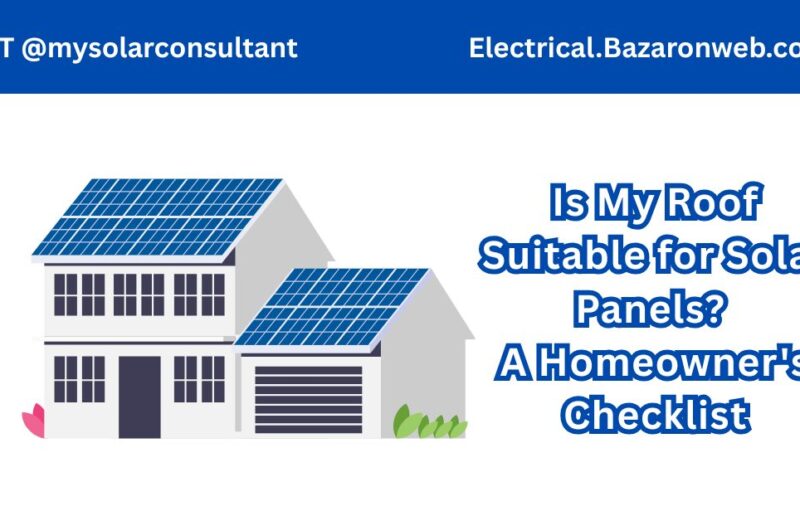A Homeowner’s Checklist
Thinking of going solar but not sure if your roof is a good fit? You’re not alone. As a solar EPC consultant with over 25 years of experience, I’ve seen how roof suitability plays a major role in solar system performance and long-term savings.
Here’s a simple checklist to help you find out if your roof is ready for solar panels—before you make the investment.
✅ 1. Roof Direction (Orientation)
Best direction:
- In the U.S. Northern Hemisphere, south-facing roofs get the most sunlight throughout the day.
- East- and west-facing roofs also work, though with slightly reduced efficiency.
🔍 Tip: South-facing arrays produce 15–20% more energy annually than east- or west-facing ones.
✅ 2. Roof Tilt (Angle)
- Ideal roof pitch: 15° to 40°
- Flat roofs can still be used with tilt racks to angle panels correctly.
📐 Steeper roofs may need specialized racking, but solar installers can usually work around it.
✅ 3. Shade Levels
Check for:
- Trees, neighboring buildings, chimneys, or AC units that cast shade on your roof—especially from 9 AM to 3 PM.
🌳 Even partial shade can reduce solar output significantly. Ask for a “shade analysis” before installation.
✅ 4. Roof Condition & Age
- Is your roof structurally sound?
- If your roof is 15+ years old, consider replacing or reinforcing it before installation.
🧱 It’s better to install solar on a roof that won’t need replacement during the life of your solar system (typically 25 years).
✅ 5. Roof Size & Usable Area
You’ll need about 100 square feet per kW of solar panels.
Example:
- A 6 kW system = ~600 sq. ft.
- Avoid areas with skylights, vents, or obstacles.
📏 Your installer will design around obstructions and maximize usable space.
✅ 6. Roofing Material
Solar panels can be installed on:
- Asphalt shingles ✅ (most common in the U.S.)
- Metal roofs ✅ (ideal for mounting)
- Clay tiles ⚠️ (requires careful handling)
- Wood shakes ❌ (often not recommended due to fire risk and fragility)
✅ 7. Local Regulations & HOA Rules
Some homeowners’ associations (HOAs) or local building codes may:
- Require prior approval
- Restrict panel placement or visibility
📄 Check zoning laws, HOA bylaws, and permit requirements early in the process.
✅ 8. Snow Load & Wind Resistance
In snowy or windy regions:
- Ensure your roof can support added weight
- Verify the mounting system meets local wind/snow load codes
❄️ Ask your installer for a wind/snow load certification if you’re in a region like the Northeast or Midwest.
Final Word
Not every roof is perfect for solar—but with the right planning, most homes can be adapted to support a productive, efficient system.
If you’re unsure, get a free site evaluation from a certified solar EPC professional. They’ll analyze your roof and design a system that works best for your home.
Written by Sudeep Srivastava
Electrical Engineer | Solar EPC Consultant | 25+ Years of Solar Design & Installation in Residential Projects

